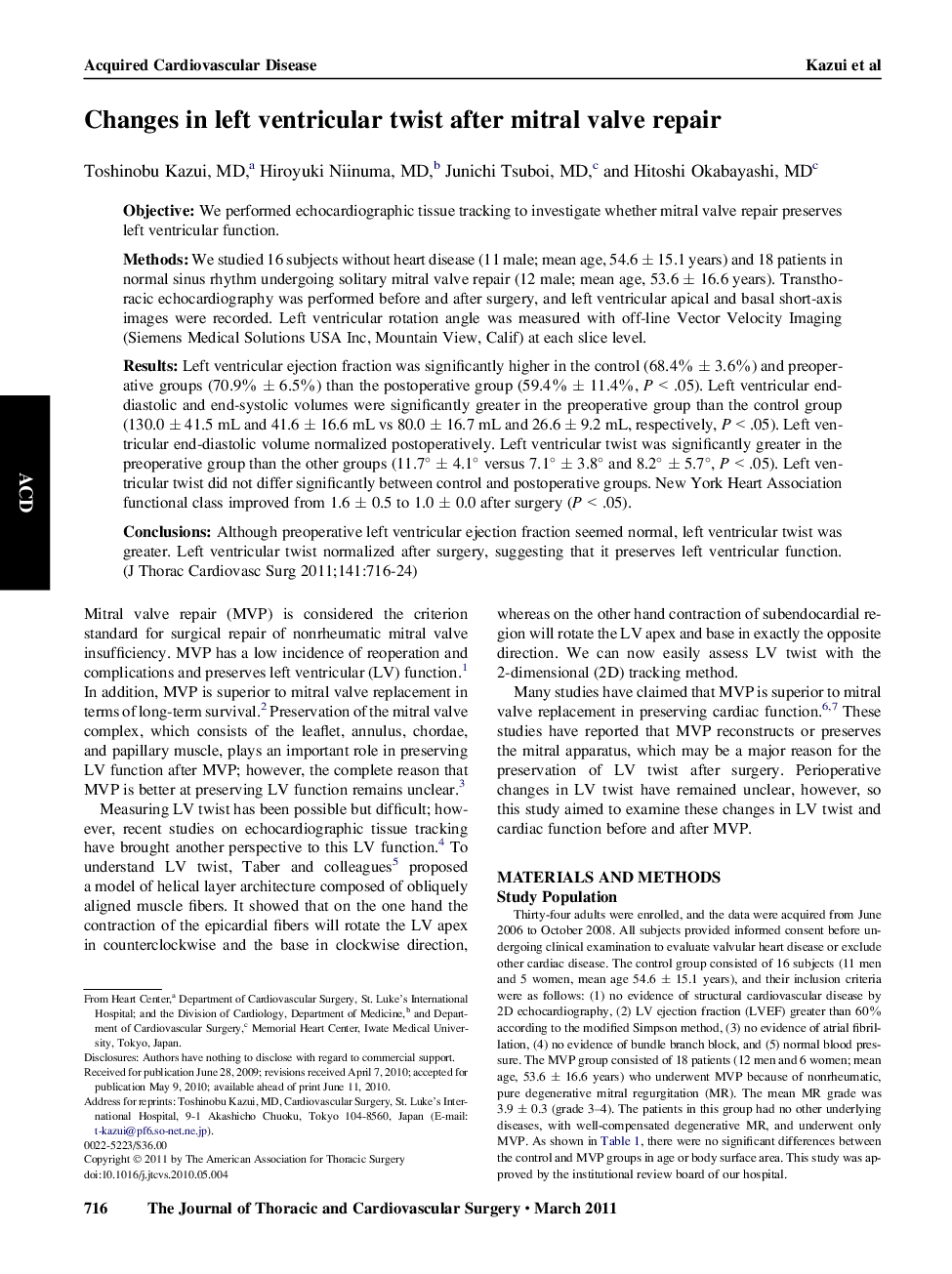| Article ID | Journal | Published Year | Pages | File Type |
|---|---|---|---|---|
| 2981623 | The Journal of Thoracic and Cardiovascular Surgery | 2011 | 9 Pages |
ObjectiveWe performed echocardiographic tissue tracking to investigate whether mitral valve repair preserves left ventricular function.MethodsWe studied 16 subjects without heart disease (11 male; mean age, 54.6 ± 15.1 years) and 18 patients in normal sinus rhythm undergoing solitary mitral valve repair (12 male; mean age, 53.6 ± 16.6 years). Transthoracic echocardiography was performed before and after surgery, and left ventricular apical and basal short-axis images were recorded. Left ventricular rotation angle was measured with off-line Vector Velocity Imaging (Siemens Medical Solutions USA Inc, Mountain View, Calif) at each slice level.ResultsLeft ventricular ejection fraction was significantly higher in the control (68.4% ± 3.6%) and preoperative groups (70.9% ± 6.5%) than the postoperative group (59.4% ± 11.4%, P < .05). Left ventricular end-diastolic and end-systolic volumes were significantly greater in the preoperative group than the control group (130.0 ± 41.5 mL and 41.6 ± 16.6 mL vs 80.0 ± 16.7 mL and 26.6 ± 9.2 mL, respectively, P < .05). Left ventricular end-diastolic volume normalized postoperatively. Left ventricular twist was significantly greater in the preoperative group than the other groups (11.7° ± 4.1° versus 7.1° ± 3.8° and 8.2° ± 5.7°, P < .05). Left ventricular twist did not differ significantly between control and postoperative groups. New York Heart Association functional class improved from 1.6 ± 0.5 to 1.0 ± 0.0 after surgery (P < .05).ConclusionsAlthough preoperative left ventricular ejection fraction seemed normal, left ventricular twist was greater. Left ventricular twist normalized after surgery, suggesting that it preserves left ventricular function.
